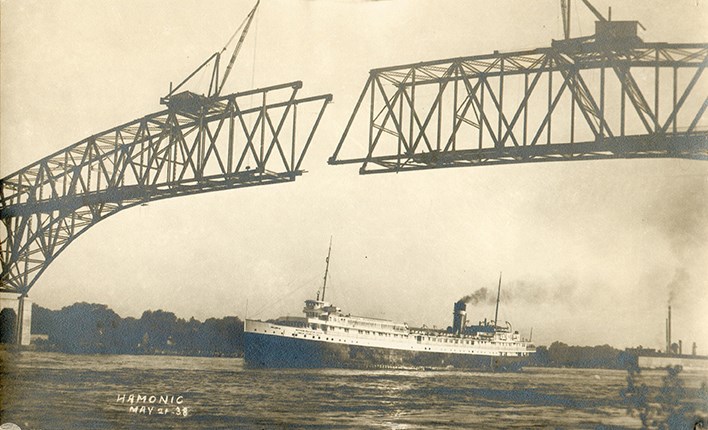Kip Cuthbert
During my daily community perambulations in search of Sarnia’s unspoken history a story from ages ago continues to rear it’s ugly head from some of our old-timers.
It’s about a man who was accidentally buried inside the north pier of the Blue Water Bridge during its construction in 1937-38.
It may sound corny, but the myth persists strongly to this day.
Recently I spoke with a fellow from Point Edward who said that when they were pouring the concrete on the Canadian side an unfortunate worker slipped, fell and was buried in the cement.
It happened very quickly and so they simply kept pouring.
The story has been told many times over, but this fellow’s version made me feel like it was more reality than myth.
However, I've checked many newspaper articles from the period and haven't found anything to suggest it happened at all.
And there are other reasons to doubt the event happened. For one thing, the story isn’t unique to Sarnia.
From the Brooklyn Bridge to the Golden Gate Bridge to the Hoover Dam, tall tales abound about people falling into the wet concrete.
I’ve even traced this kind of folklore back to the London Bridge, where skeletal remains were supposedly found.
And reminiscent of the Chevy Chase joke delivered on Saturday Night Live’s weekend update: "Jimmy Hoffa will always be a cornerstone in the (Teamsters) organization."
I have also found there are scientific reasons to be skeptical of the story. When questioning the Hoover Dam myth one architectural authority put it this way:
“The point of burial would quickly become a weakness in the structural integrity of that particular concrete block. A human body is less structurally sound than the same volume of concrete. And if the body experienced any sort of decay, an air pocket could form around the body, further decreasing the stability of the weak point.”
Of the 96 people killed during construction of the Hoover Dam at least one succumbed to being buried in concrete that poured down its side. However, his body was retrieved 16 hours later.
So how did the tragic Blue Water Bridge story get started?
Perhaps it might have begun in 1937-38 as a parental warning to keep curious and adventurous children away from a dangerous site.
It was a risky job site. There were in fact two deaths: Myron Mathews, 43, an experienced riveter who fell 130 feet to his death, and 12-year-old Jeanette Maria Sophia, who lost an arm while playing at the site and died of tetanus 10 days later.
There are some who are sure the bridge death happened, but without tangible evidence it must remain in the realm of myth and legend.
What have you heard?
Kip Cuthbert is a local DJ for Stoke’s Bay and a history buff.
